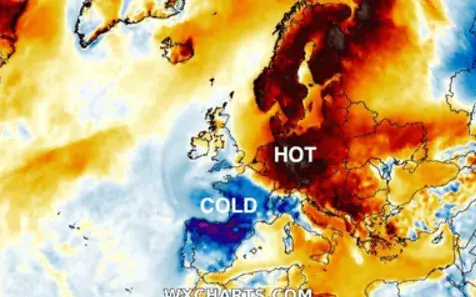
The planet is burning, what is happening? The reality of the world's major fires is very different from one to another, but what is clear is the relationship between high-intensity fires and climate change around the world , as the scientific community warns.
Some key data:
- More frequent and intense wildfires: These are expected to increase by up to 14% by 2030, 30% by the end of 2050 and 50% by the end of the century.
- Increased CO2 emissions from wildfires: Emissions from Canadian wildfires in 2023 reached 647 million metric tons of CO2.
- Climate change worsens forest fires and these affect the ozone layer: The historic 2020 fires in Australia widened the Antarctic ozone hole by 2.5 million km2 (10% more surface area than the previous year).
Although the origin of the fires varies greatly from one to another, it is common for them to worsen due to an increase in droughts and more intense heat waves. And this is evident at all latitudes. For example, the 2023 fires in Canada with the most destructive force ever recorded with 15 million hectares of land (equivalent to an area larger than England) or the recent declaration of a national emergency in Bolivia with 3.3 million hectares burned so far this year.
On the other hand, when the forests of the Amazon, Indonesia or Central Africa burn, the fires are caused with the aim of deforestation for the production of raw materials that are exported to the international market (pastures, soy, palm oil, plantations for paper production, etc.). These are primary forests of planetary importance and which in turn aggravate climate change. A vicious circle.
If we look at Mediterranean ecosystems (the dry season coincides with the summer), we will see a photo of the most dramatic fires from the south-central and south-western parts of Australia, southern Africa, the Chilean scrubland, California (USA) and, of course, the Mediterranean Basin ( Portugal, Greece, Spain, Cyprus, Italy, Croatia, Tunisia, etc.). Ecosystems linked to fire, but with fires never seen before.
In Spain, large forest fires are an environmental and social problem, including for civil protection. 2022 was the worst year in the last 28 years, with 268,000 hectares affected and 30,000 people evacuated . This summer, however, ended with a 46.5% reduction in the affected area compared to the average, as temperature, humidity and wind conditions were more favourable to prevent the spread of large fires. Meanwhile, for example, in Greece, the flames were approaching Athens, with the evacuation of more than 50,000 people. This is again explained by climate change: the accelerated warming of the Arctic weakens the winds of the polar jet stream, retaining cold air, causing colder masses to descend to the south and warmer ones to rise to the north. Spain “had” to cool down while others suffered high temperatures and, therefore, a greater risk of forest fires.



Add new comment